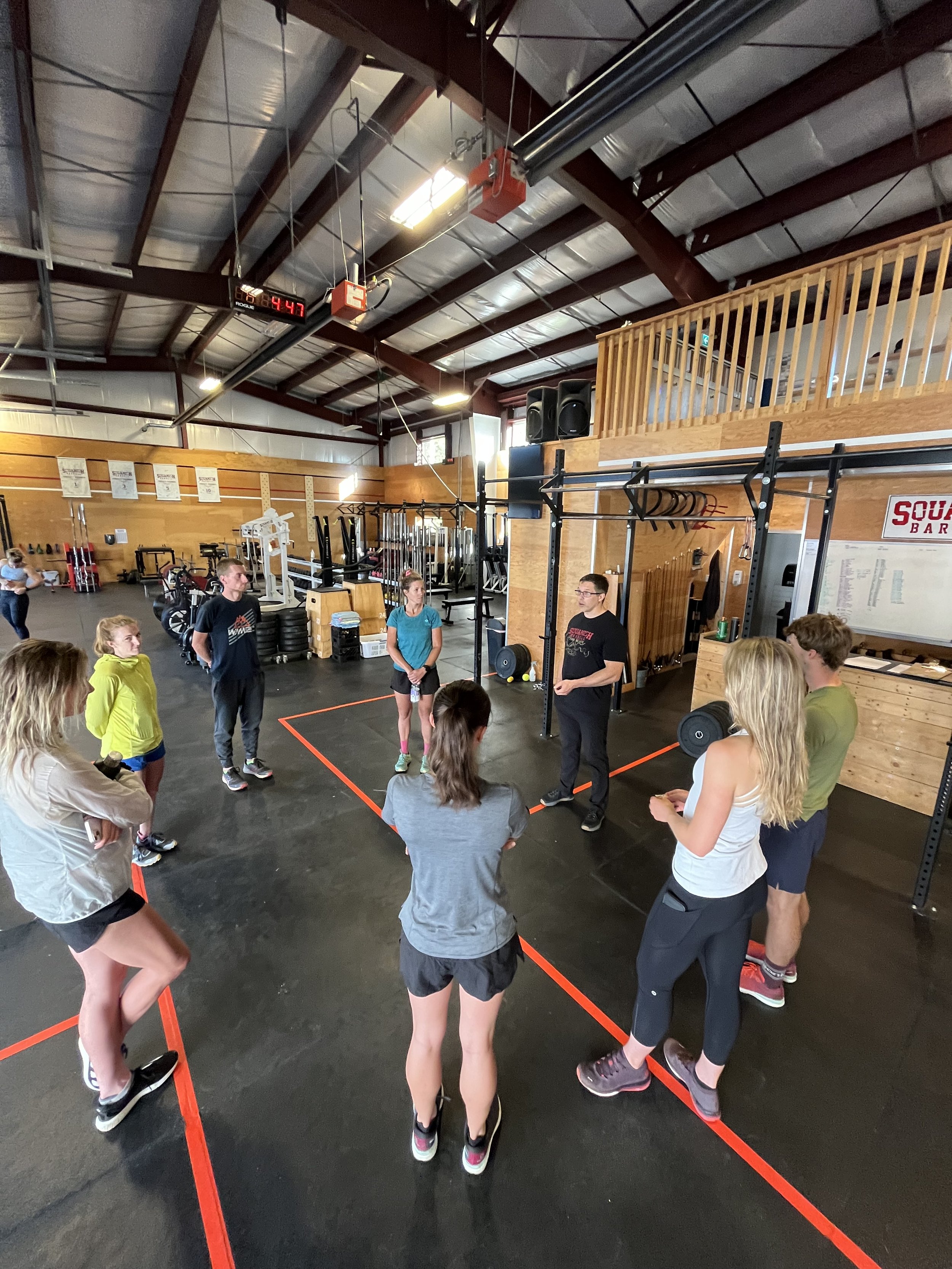- Preseason training for ski touring -
Cramp up now, so you don’t on the bootpack!
There are a bunch of components we have to consider if we want to maximize our training for ski season. This article covers the most important ones and how we can target these with a ski specific purpose.
Aerobic Fitness - this is often thought of as the gas in the tank but I prefer to think of it as the size of the gas tank. Having more capacity is always better. Limited capacity is a problem. This is your ability to go through a big day, or maybe several in a row.
Muscular Strength - can you make that jump turn?
Muscular Power - how many jump turns can you link together?
Muscular Endurance - repeating the single leg step up while booting up the couloir.
Core Stability - this keeps your upper body doing one thing while the lower body does another, but totally in sync.
Recovery - this is the gas in the tank!
We need to optimize all of the above to prepare for ski season and it requires some strategy and structure. Ideally you’re starting this plan now and can continue through the winter. I consider summer to be fairly unstructured training. Sept - Dec becomes highly structured and focused on training more than skiing. Dec - Mar is a little heavier on the skiing with a smaller training component and then Mar-May is all fun skiing and objects and almost no specific training.
Aerobic Fitness comes from steady, long term adherence to a structured aerobic activity plan. Touring all winter and running and/or cycling all summer check this box. If you’re just starting now, you’re behind the game. It’s never too late to start but start earlier next year! AF workouts should be 3-6x /week and be generally quite easy paced. These are your trail runs, mountain bike rides, and alpine hikes and climbs!
Muscular Strength comes from specific gym work. This is high weight and low repetition muscle building. The fall is a perfect time to dedicate to building up MS. Get into the gym and move big weights while the weather sucks. Focus on major muscle groups related to skiing and choose a few simple exercises - squatting and deadlifting are key. Add in some single leg squats or single leg step ups as well.
Muscular Power is a more complex training concept and will come over time. This involves adding a speed component to your strength work. This is best done under the supervision of a good strength coach as form can quickly deteriorate and cause injuries. We partner with Ridgeline Athletics and Squamish Barbell to offer the Mountain Training Group in Squamish. Look for local gyms that offer ski focused programming!
Muscular Endurance is combining AF and MS. This is the ability to move from simple trail running, to hiking steep uphill with a heavy pack. For most athletes, using a very steep uphill trail and powerhiking is very effective. In Squamish, the Chief and the Evac Trail are excellent options. Highly fit athletes will need to add resistance (weight) to their uphill power hiking. Bounding intervals on lower angle uphills is also good for developing AF and ME.
Core Stability is incredibly important in mountain sports! It's also one of the easiest to train and requires no equipment! A combination of crunches and planking is often enough to shred a part-time athlete's ab muscles so just google "core workout for skiers" and follow the YouTube pain train. Make sure at least half your exercises involve a twist motion to get that ski specificity.
Recovery is the most often overlooked component of training. If all of the above sounds daunting to incorporate into your daily routine, that's because it is! Building a program that includes everything is complex and ideally is done under a coach's supervision. Without programming sufficient rest, workouts become ineffective and it becomes harder to do any fun adventures. Your training load is of course a major component in recovery but almost as important is sleep and fuelling. It’s critical when training big hours to ensure your sleep is as long and high quality as possible as well as being fuelled before, during, and after exercise.
This article just barely brushes the surface of developing a training plan but hopefully it helps you get the ball rolling! Reach out to our friends over at Ridgeline Athletics if you have any questions!



